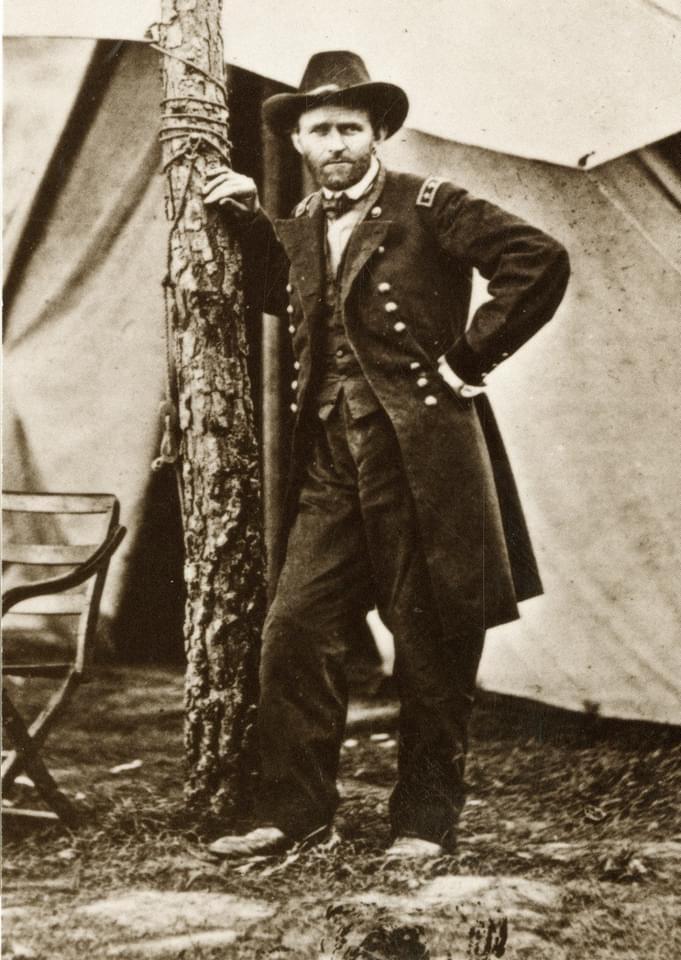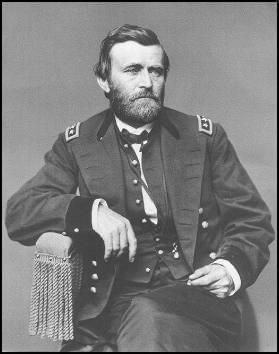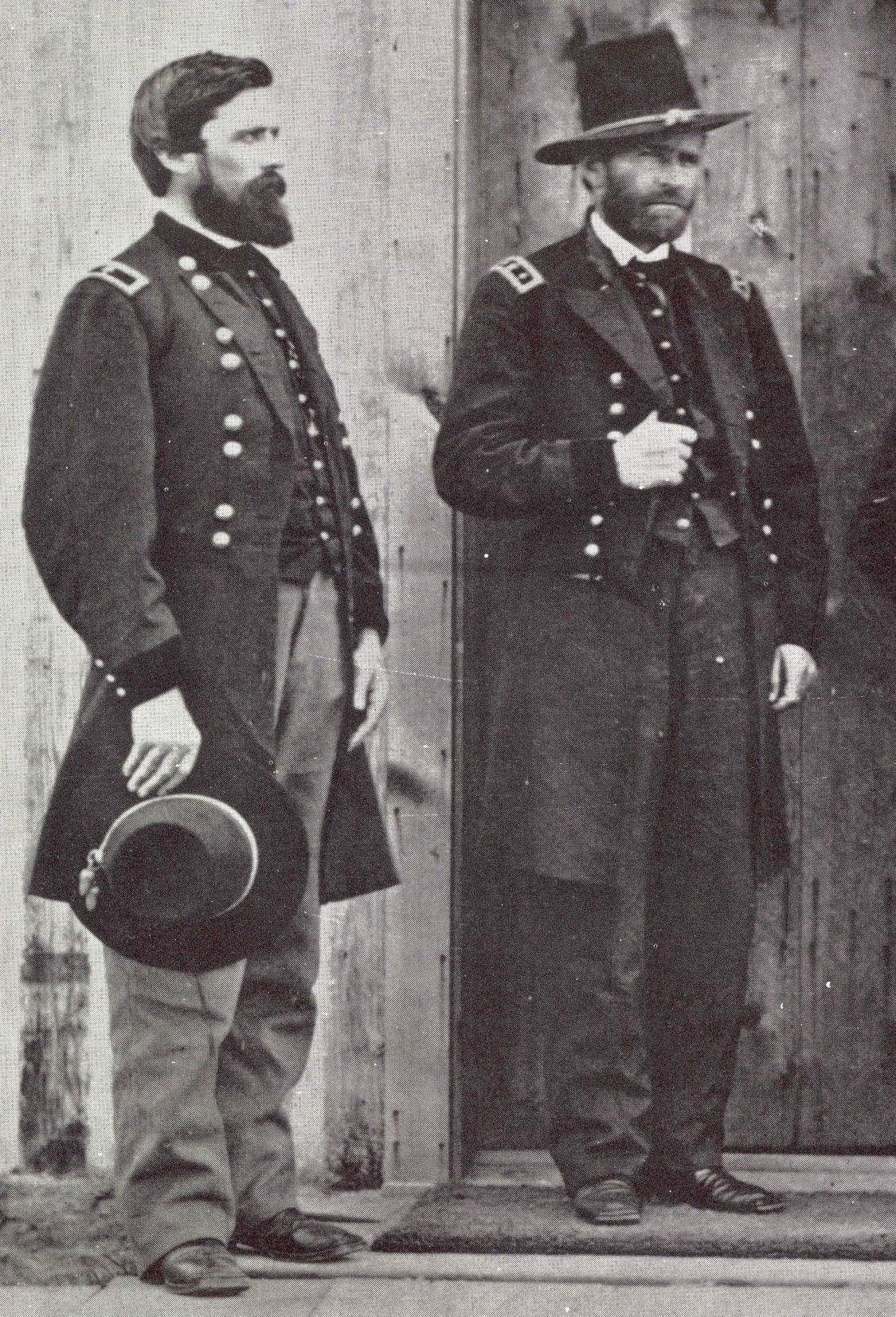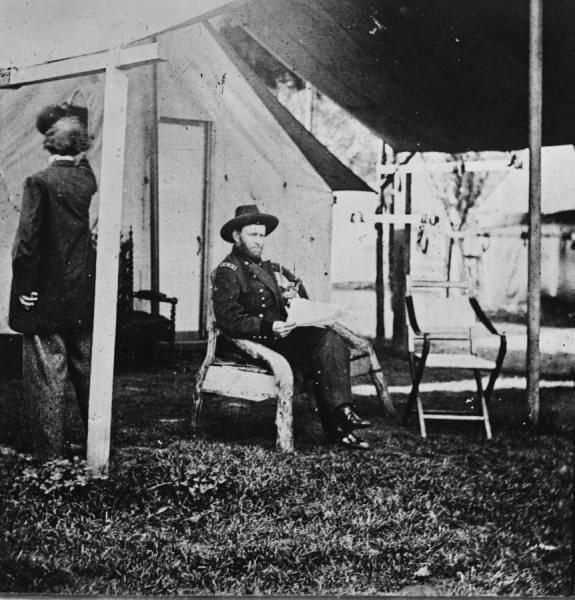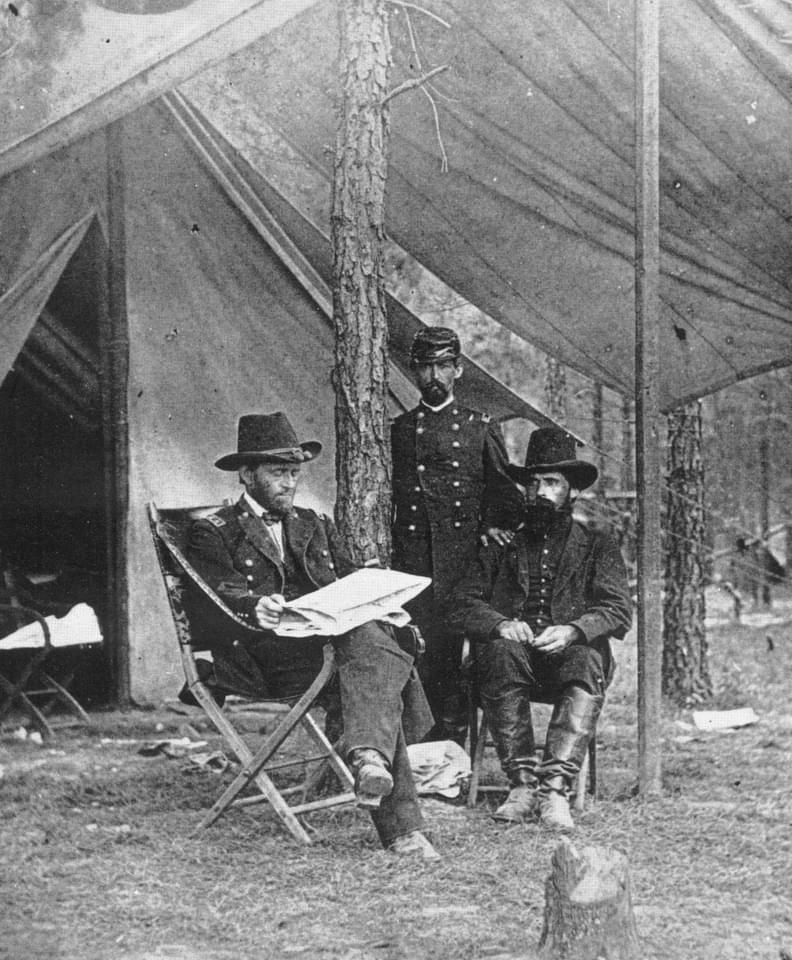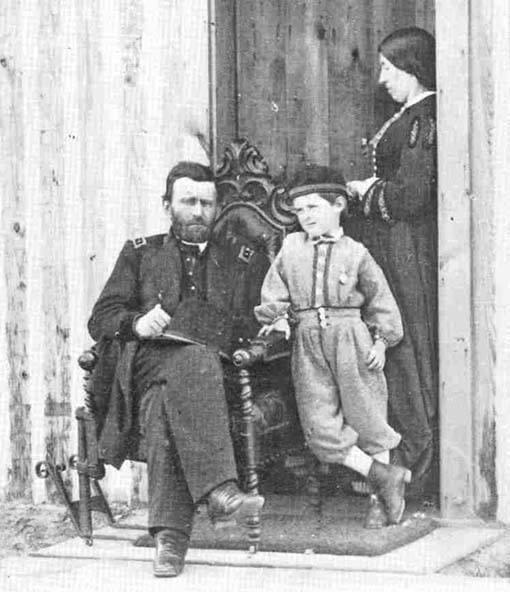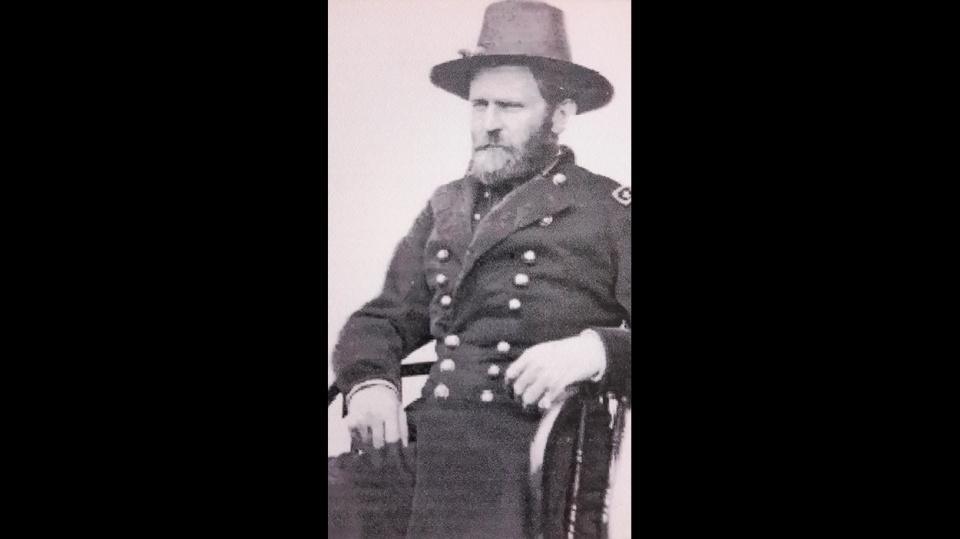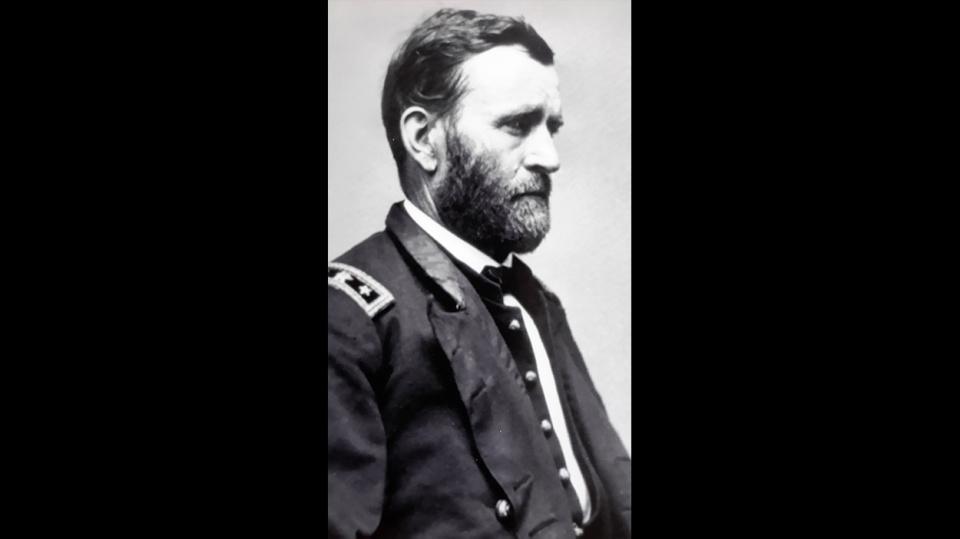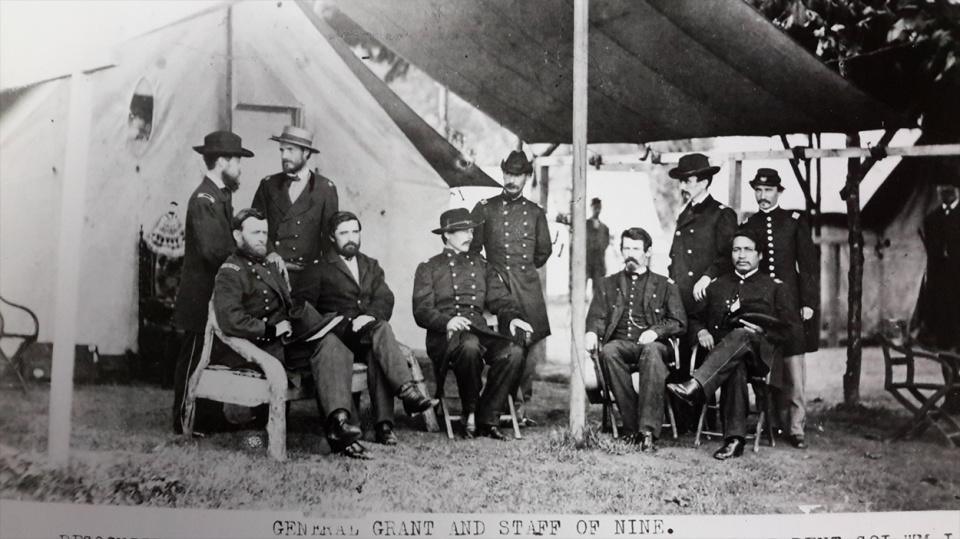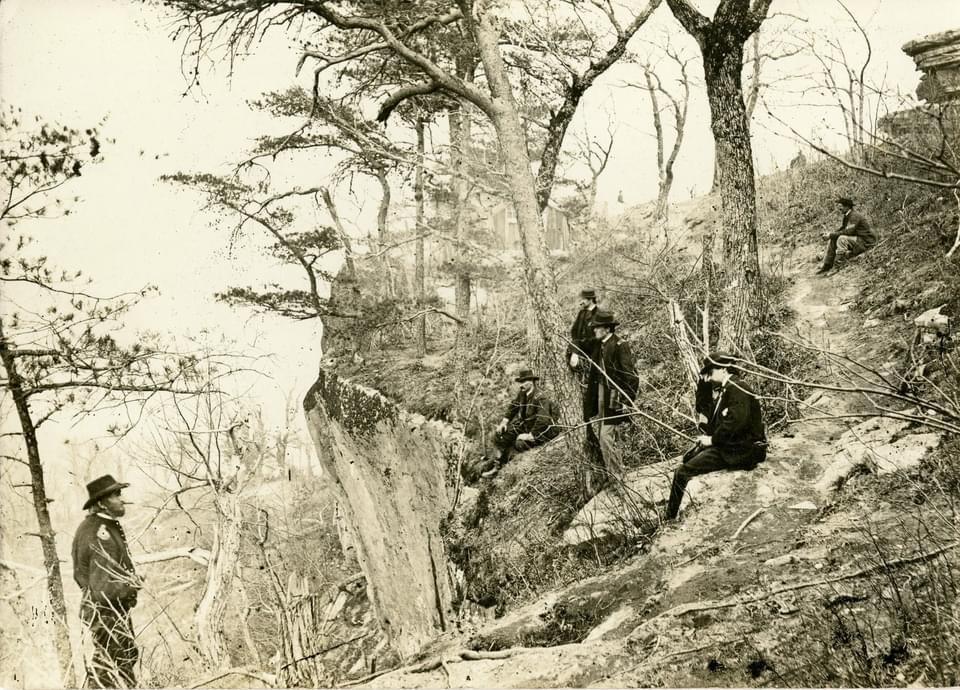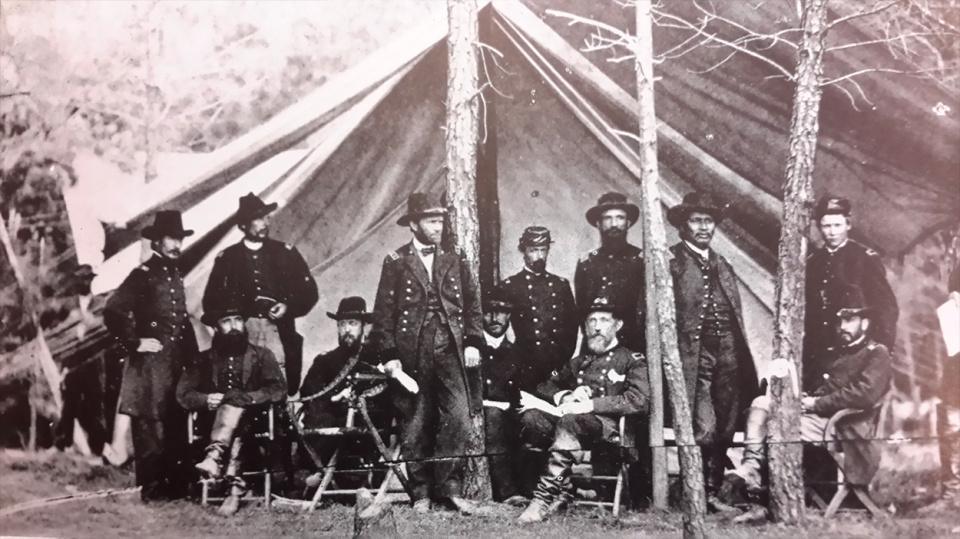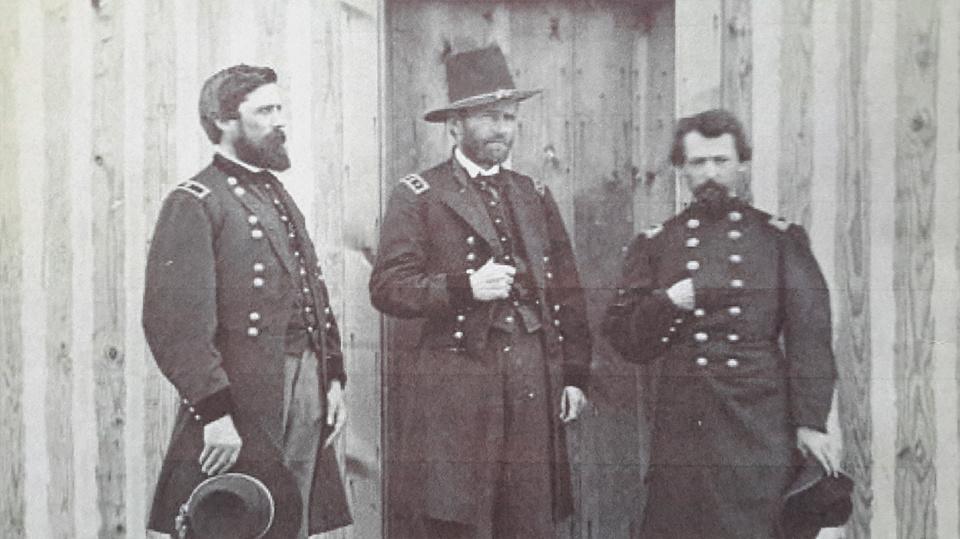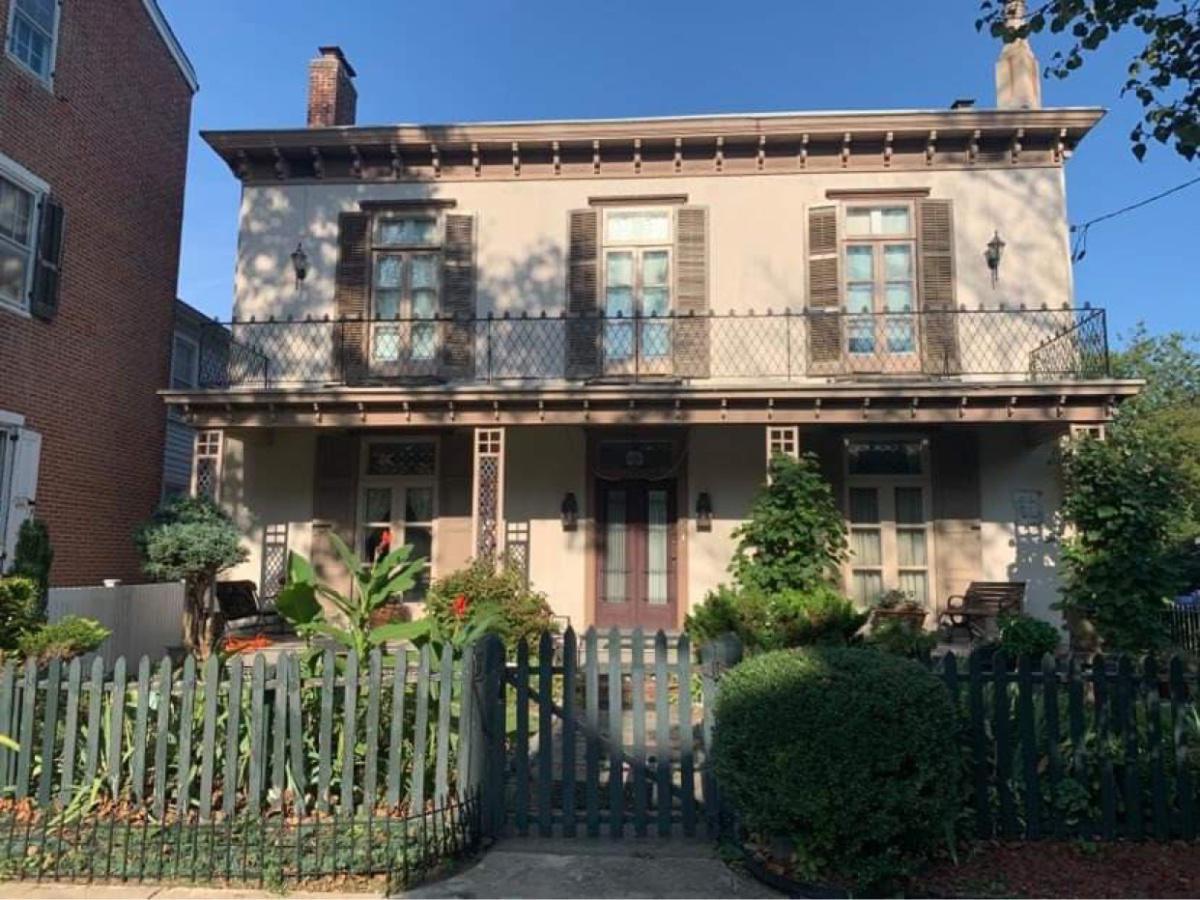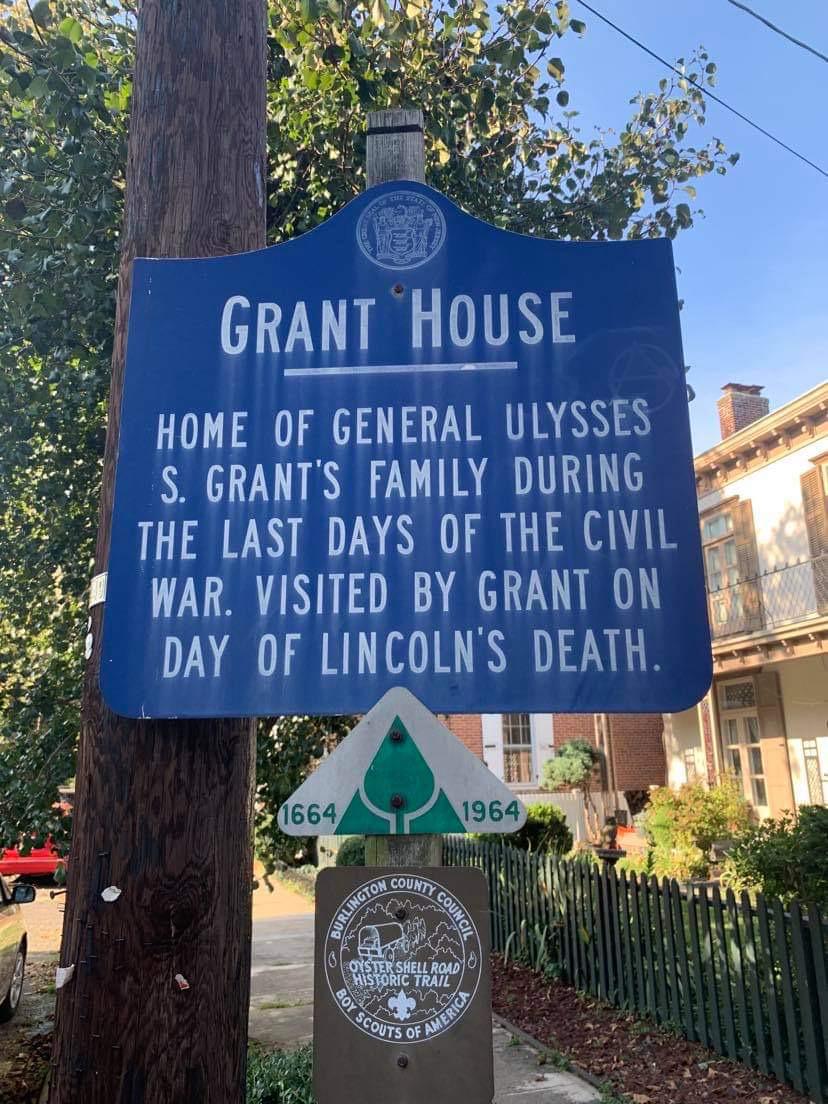In early June, Governor Yates sent Grant a telegram asking if he would accept the Colonelcy of the 21st Illinois Infantry, known as the Mattoon Regiment. The former colonel had lost his command as he could not enforce discipline. The regiment was so out of control that political critics had renamed the regiment, “Governor Yates Hellions.” Officers who had met Grant while he was serving as mustering officer felt that the “Galena Captain” was a good man and petitioned the Governor to appoint him as Colonel. Gov. Yates had little personal contact with Grant and was inclined to deny the proposition until State Auditor Jesse K. Dubois happened to enter the room and in joining the conversation, spoke so highly of Grant that Yates consented to the choice.
Grant took command of the regiment on June 16. He quickly began implementing discipline and order within his troop. On July 3, Grant and his regiment were ordered to Quincy, Illinois. To perpetuate their training, Grant decided to have his regiment march to Quincy rather than taking the rail. However, because of destination changes, they needed to employ steamer and rail to reach Quincy. Grant’s oldest son, Frederick, who was 11 years old at the time, was often with his father during the war. However, he was sent home during this time.
With his regiment of nearly a 1,000 men, Grant marched toward the reported rebel encampment. He and his men were ready for battle, but as it turned out, the camp was vacant. The adversaries had already retreated 40 miles. Grant then marched his regiment onto Mexico, Missouri, where they joined General Pope’s command and engaged in occupying and neutralizing Missouri.
In August, just 4 months after the attack on Ft. Sumter, Grant read in a St. Louis paper that he was now a Brigadier General. Grant surmised, Galena Republican Congressman Elihu B. Washburne, under the presidency of Lincoln, had nominated him. Grant immediately wrote to Major John A. Rawlins of Galena, offering him a staff position. Rawlins accepted. The new Brigadier General now had a trusted chief of staff who would be his right administrative arm throughout the war. Both sides were mobilizing, and the war was starting to heat up.
Due to his success in planning and executing battle plans, he quickly rose through the ranks. This would culminate on March 9, 1864, when Grant received his commission as Lieutenant General from President Abraham Lincoln. Later Lincoln was heard to say, “I don’t know General Grant’s plans, and I don’t want to know them. Thank God, I’ve got a general at last!” Another time during the war, Lincoln once responded to the accusation regarding Grant's supposed heavy drinking, "Why, tell me what he drinks, and I'll have a keg sent to all my other generals."
After several military campaigns, the Confederates surrendered at Fort Henry, Tennessee on February 6. Ten days later came the submission of Fort Donelson, Tennessee. Following these victories, Grant became a national hero and gained the nickname “U.S. Grant, Unconditional Surrender.” The day after the surrender of Ft. Donelson, Abraham Lincoln promoted Grant to the rank of Major General of Volunteers. One of his greatest strengths was his utilization of maps while planning battle strategies. He was said to be able to remember every detail.
By the first of April, with the war a year old, General Grant’s troops were encamped at Pittsburgh Landing, when they found themselves under vicious attack from the Confederate Army. During the night, Grant planned his counter attack, and on the second day the battle, known as Shiloh, the battle was finally won, and the Confederates retreated. This was a significant battle, and the losses on both sides were staggering. Each side had approximately 40,000 men in action with a resulting loss of 1/4th of their troops. Over 10,000 men were killed or wounded per side, with a total of over 20,000 lives lost in the battle.
As the casualty list unfolded, Grant came under harsh criticism. He was referred to as ‘Butcher’ and the “Incompetent Commander at Shiloh.” Many influential people asked for Grant’s demotion, putting pressure on Lincoln to replace him. Lincoln’s reply was, “I can’t spare this man – he fights.”
In April, Grant moved his troops to Vicksburg, Mississippi, and the long and hard-fought battle on water and land began. Grant implemented his grand strategy in taking Vicksburg by moving between two wings of the enemy. In five days, he fought and defeated the enemy at Jackson, Champion Hill, and Big Black River. On July 4, 1863, Grant forced the surrender of 30,000 confederates. This was a huge victory since it divided the Confederacy and opened the Mississippi River.
On October 23, Grant entered Chattanooga and five days later successfully opened a much needed supply route to prevent his men and animals from starving; the route was fittingly called the” Cracker Line” because that was basically all they had to eat. This had been a monumental risk, but it was either that or abandon Chattanooga, and Grant wasn’t about to do that. The following month, Chattanooga was defeated after an intense two-day battle. Union possession of Chattanooga opened up the Deep South for a Union invasion. The stage was set for Sherman’s Atlanta Campaign the following spring.
On March 9, 1864, President Lincoln promoted Grant once again, this time to Lieutenant General and in command of the entire Union forces! This was a position previously held only by General George Washington. What an honor for a man who three years earlier was a little-known clerk at his father’s leather store in Galena!
On March 18, 1864, Galena citizens presented Grant with a $1,000 sword as a “Token of their appreciation of his invaluable services to the country in the suppression of the Rebellion.” The sword was beautifully designed and elaborately finished; the grasp and guard were ornamented with figures representing the heads of Jupiter, Mars, Mercury and Minerva; the grasp was inlaid with tortoise shell, held in place by gold studs, and the sword handle was encircled with diamonds set in pure gold. Underneath the circle of diamonds was a shield bearing the motto, "Sic Floret Republique”, which loosely translates to, “Thus flowers the Republic.”
After the fall of Vicksburg, Grant was being seriously considered as a candidate for the presidency. Grant didn’t show much interest however, stating, “I am not a politician, never was and never hope to be.” He jokingly stated; “The only office I desire is Mayor of Galena, so I can build a new sidewalk from my house to the depot.”
More battles followed, and in June, the battle of Cold Harbor, Virginia was fought.
On March 11, at City Point, Virginia, Elihu B. Washburne presented Grant with a gold medal in recognition of his services to his country. The images on your screen are photos of Grant with Staff, and his wife and youngest son, Jesse, at City Point, Virginia during 1864-1865. Also pictured is Grant at Cold Harbor with Gen. Rawlins on the left and Theodore Bowers on the right of Grant.
This was General Grant at Camp during the Civil War.
General Grant, Jessie, and Julia at Cold Harbor. Julia would often times visit Grant on the battlefields.
General Grant and his Generals during the Civil War. Native Galena John Rawlins is seated next to Grant, and on the far right, sitting is General Ely Parker.
General Ulysses S. Grant on Lookout Mountain near Chattanooga, Tennessee.
Pictured is the house in Burlington, New Jersey where Grant lived iduring the end of the Civil War.
(Curtesy of my childhood friend, Holly Brown Wright.)


